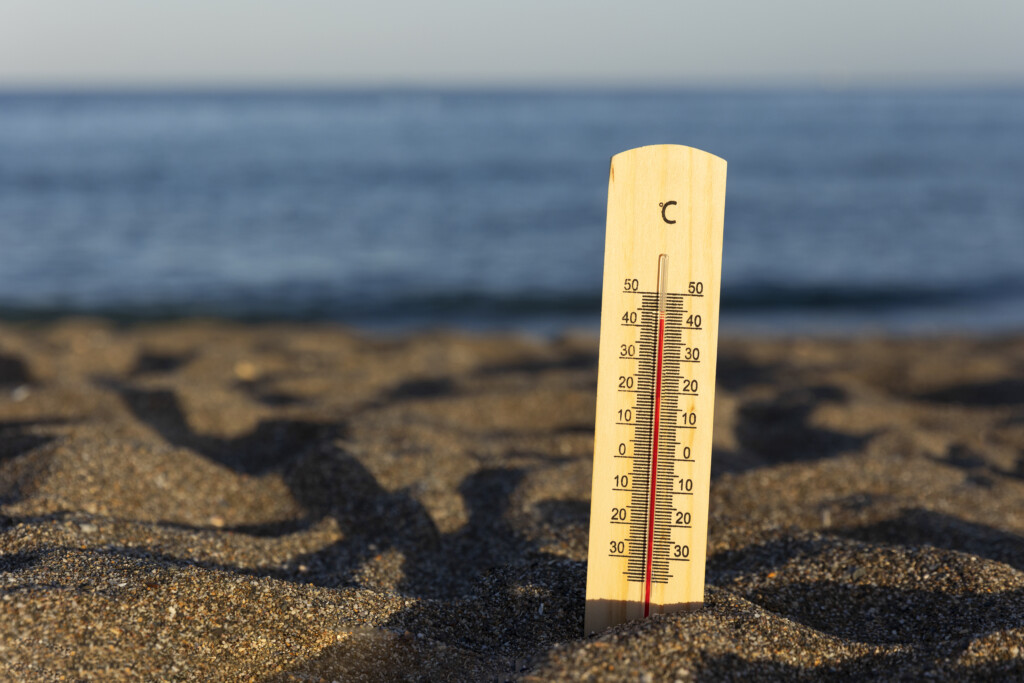Environmental Health and Safety (EHS) is fundamental to our daily lives and well-being. EHS, in its simplest form, refers to the principles, regulations, and procedures implemented to protect the health and safety of both people and the environment. It encapsulates a wide range of disciplines, from air and water quality management to workplace safety, with the core objective of forging a safer, healthier world for us all.
Engaging with the specifics, a 2019 report by the World Health Organization (WHO) found that an estimated 9 out of 10 people worldwide breathe air exceeding WHO guideline limits for pollutants. This is a startling reminder of the urgent need for effective Environmental Health practices.
❗ Air pollution threatens us all, but the most vulnerable, such as children, the elderly, and those with chronic diseases, bear the brunt of this burden.
On the other hand, Safety is an equally substantial component of EHS. According to the National Safety Council, every 7 seconds, a worker is injured on the job, emphasizing the critical need for stringent safety measures in workplaces.
| Year | Global Air Pollution Deaths | Workplace Injuries (U.S. only) |
|---|---|---|
| 2016 | 4.2 million | 4.5 million |
| 2017 | 4.1 million | 4.6 million |
| 2018 | 4.2 million | 4.6 million |
Such statistics underline the crucial role EHS plays in our lives. In essence, the fundamental goal of EHS is to mitigate potential environmental health risks and ensure safety in all aspects of human activity, leading to a more sustainable and secure world.

Understanding the standards and regulations of Environmental Health and Safety (EHS) is essential for the health and wellbeing of both individuals and our planet. These guidelines, set by various governing bodies, ensure proper practices are followed to minimize harm to the environment and humans.
There are several key organizations that establish EHS standards globally. These include the Environmental Protection Agency (EPA), the Occupational Safety and Health Administration (OSHA), and the International Organization for Standardization (ISO). Let’s delve a bit deeper into each one.
The significance of complying with these standards and regulations cannot be understated. They serve to protect not only our environment but also the health and safety of individuals, particularly those in the workforce. Non-compliance can lead to disastrous consequences both in terms of human life and financial cost.
🌱Maintaining compliance with EHS standards is not only a legal obligation but a moral one. It reflects an organization’s commitment to its employees’ wellbeing and a sustainable future.
Here, let’s look at some data to illustrate the impact of EHS regulations.
| Year | Workplace Fatalities (U.S.) | EPA Clean Air Act Benefits |
|---|---|---|
| 1970 (pre-OSHA) | 14,000+ | N/A |
| 2018 | 5,250 | $2 Trillion (Estimated) |
This snapshot clearly shows how effective implementation and enforcement of EHS regulations can bring about a substantial decrease in workplace fatalities and deliver immense benefits to the environment and the economy.
Environmental Health and Safety management systems, often abbreviated as EHS, are essential mechanisms designed to protect the health and safety of people and the environment. These systems are critical in any organization or industry, as they provide a structured approach to preventing accidents, illnesses, and environmental harm.
EHS management systems typically encompass the following key components:
The effectiveness of an EHS management system is usually gauged by a company’s safety performance statistics, such as accident rates, and environmental metrics, such as waste generation or energy usage.
💭Remember, the ultimate goal of an EHS system is not merely compliance with regulations, but the creation of a culture where safety and environmental stewardship are integral to every operation.
EHS management systems can vary greatly depending on the industry and organization size. However, the following table provides a general overview of some common elements:
| Element | Description |
|---|---|
| Risk Management | Identification, assessment, and control of risks to prevent accidents and environmental harm. |
| Regulatory Compliance | Ensuring conformance with environmental and safety laws and regulations. |
| Training and Education | Providing employees with the necessary knowledge and skills to perform their tasks safely and responsibly. |
| Emergency Preparedness | Planning for potential incidents and emergencies to minimize their impact. |
| Performance Monitoring | Tracking and analyzing safety and environmental performance data to identify trends and opportunities for improvement. |
When we talk about environmental health and safety, we must acknowledge the various types of environmental hazards that pose significant threats to human health and wellbeing. These hazards can broadly be classified into four categories: physical, chemical, biological, and psychosocial.
Physical hazards refer to elements within the environment that can cause harm to humans without necessarily touching them. Examples include radiation, exposure to sunlight, and temperature extremes.

Chemical hazards encompass any harmful chemicals present in the environment. They can exist in the air we breathe, the food we eat, the water we drink, or in countless man-made products. Common ones include lead, asbestos, pesticides, and certain industrial chemicals.

Biological hazards are organic substances that pose a threat to human health and safety. These include pathogens like bacteria, viruses, and other microorganisms, as well as venom from animals.

Psychosocial hazards relate to the way work is designed, organized, and managed, as well as the economic and social contexts of work. They are associated with psychiatric, psychological, and/or physical injury or illness. Examples include stress, violence, harassment, bullying, and work-life imbalance.
🩹In essence, environmental health and safety is all about recognizing these hazards, understanding their potential effects, and taking appropriate steps to minimize their impact. It is an integral aspect of our lives, aiming to prevent disease, injury, and disability by managing the environment and behaviors.
Environmental Health and Safety (EHS) is a field that requires a significant level of expertise and understanding. This is not an area one stumbles upon by chance, but a profession built on purpose-driven training and education. So, how does one prepare to become an EHS professional?
Typically, a career in EHS begins with a strong academic foundation. Many professionals in the field hold a bachelor’s degree in environmental science, occupational safety, industrial hygiene, or a related field. However, the quest for knowledge doesn’t stop here. What does the next step entail?
While academic preparation is critical, there’s nothing quite like hands-on experience. Through on-the-job training, professionals learn to apply theoretical knowledge to real-world situations. They learn how to identify potential hazards, develop safety protocols, and implement effective strategies to mitigate risks. The reality of the field becomes clearer – it’s not just about theory, it’s about saving lives and protecting our environment. Learning in this field is continuous. As the saying goes, “The best way to learn environmental health and safety is to live it.”
Continuous learning is a fundamental part of being an EHS professional. Ongoing professional development, such as attending seminars, workshops, and conferences, not only keeps professionals up-to-date but also helps them stay ahead of the curve. Remember, the goal is not just to react to environmental health and safety issues, but to proactively prevent them.
| Training/Education | Description |
|---|---|
| Academic Degrees | Provides a foundational understanding of the field, often culminating in a bachelor’s, master’s, or doctorate degree. |
| On-the-Job Training | Helps professionals apply theoretical knowledge to real-world situations, fostering practical understanding and skills. |
| Professional Development | Ensures continuous learning through seminars, workshops, and conferences, keeping professionals informed and ahead of the curve. |

When we delve into the realm of Environmental Health and Safety (EHS), we step into a sphere that is not only crucial for the sustainability of our planet but also paramount for the well-being of employees in a workplace. The question that comes to mind then is, what are the benefits of maintaining environmental health and safety in the workplace?
Firstly, a safe and healthy environment is a fundamental requirement for any workforce. By making sure that your environment is healthy and safe, you’re protecting your most valuable asset: your employees.
While the benefits to employees are clear, the financial implications of maintaining EHS shouldn’t be overlooked. Let’s break it down:
| Benefits | Implications |
|---|---|
| Reduced healthcare costs | Healthier employees equate to less money spent on healthcare costs and insurance premiums. |
| Prevention of fines and legal action | Compliance with regulations safeguards against fines and potential lawsuits. |
| Increased productivity | Safe and focused workers contribute to the bottom line through increased productivity. |
In essence, maintaining a commitment to environmental health and safety is a win-win situation. It is a beneficial strategy that fosters a culture of safety, encourages employee well-being, and ultimately, impacts the bottom line positively. So, isn’t it high time we prioritized our environment, health, and safety?
In any occupational setting, both employers and employees play critical roles in ensuring environmental health and safety. These responsibilities are not merely ethical, but also legal, with non-compliance often leading to hefty fines and lawsuits.
According to data from the Bureau of Labor Statistics, in 2021 there were 2.6 million nonfatal workplace injuries and illnesses reported in the U.S. These statistics underline the necessity for stringent health and safety measures in the workplace.
Employers bear the primary responsibility for the establishment and maintenance of a safe and healthy work environment. They are expected to:
According to a report from the National Safety Council, employers in the United States who implemented comprehensive safety programs reported a significant decrease in injury rates.
Employees, on the other hand, also have a part to play. Their roles include:
A survey by the Institute of Occupational Safety and Health found that when employees are actively involved in health and safety procedures, there is a notable reduction in workplace incidents and injuries.
In conclusion, employer and employee cooperation is crucial to ensuring environmental health and safety. By complying with established guidelines and regulations, both parties can contribute to a safer, healthier work environment.

In the ever-evolving world of Environmental Health and Safety (EHS), it’s critical to stay abreast of the latest trends and innovations. This field is, after all, at the forefront of protecting both our planet and its inhabitants. So, what does the future of EHS look like?
The advent of technology has profoundly influenced the EHS sector. From data collection and analysis to virtual training programs, technology is reshaping EHS practices. An essential part of this transformation is the integration of Artificial Intelligence (AI) and Internet of Things (IoT) in EHS management systems.
| Tech Trend | Impact on EHS |
|---|---|
| Artificial Intelligence | AI tools can analyze vast amounts of data quickly, identifying trends and making predictions that assist in risk assessment and decision-making. |
| Internet of Things | IoT devices allow for real-time monitoring of environmental conditions, improving the ability to detect and respond to potential hazards promptly. |
The past few years have seen a shift in EHS, with increasing recognition of the importance of mental health. It’s expected that the future of EHS will see a more comprehensive approach to health and safety, encompassing both physical and mental wellbeing.
Climate change and sustainability are global concerns that are increasingly becoming central to EHS. Organizations are now striving to reduce their environmental impact, and EHS practices play a fundamental role in this endeavor. As the world becomes more aware of the potential impact of climate change, the role of EHS in promoting sustainability and responsible business practices continues to grow.
With the rise in environmental awareness, regulations related to EHS are evolving. It’s crucial for organizations to stay informed and compliant with these changes to avoid penalties and protect their reputation.
Employee engagement in EHS is expected to increase. More than just following safety procedures, this involves active participation in creating a safer and healthier work environment.
The future of EHS is promising, with the potential to create healthier, safer, and more sustainable environments. With these trends and innovations, EHS will continue to evolve, meeting the challenges of the future head-on.
As we steer towards the end of our discussion, it’s crucial to reiterate the significance of Environmental Health and Safety (EHS). Its importance transcends boundaries, industries, and occupations, deeply ingrained in the daily lives of every inhabitant of our planet. But why should EHS be a priority? Let’s explore the answers together.
The first and foremost reason why EHS should be a priority is the health and wellbeing of our precious planet and its diverse inhabitants. Environmental degradation and pollution pose severe health threats to humans, animals, and plants. This fact is not just an assumption, but it’s backed up with real data and statistics. According to the World Health Organization, an estimated 12.6 million deaths each year are attributable to unhealthy environments. Certainly, the health of our planet and its inhabitants is a compelling enough reason to prioritize EHS, isn’t it?
Next, let’s discuss the legal and reputational aspects. Non-compliance with environmental regulations can lead to severe penalties, lawsuits, and damage to a company’s reputation. According to a report by Enhesa, a global EHS compliance assurance firm, there were more than 4,500 EHS regulatory developments worldwide in 2020 alone. This represents an increase of 7% compared to 2019, illustrating the ever-growing importance of regulatory compliance in EHS. Needless to say, no organization would want to bear the brunt of legal penalties or face a reputational crisis, right?
Last but not least, EHS has significant economic implications. A strong EHS culture reduces costs related to accidents, illnesses, and waste management, while potentially enhancing productivity. As per a study by the International Finance Corporation, companies with strong EHS performance had a higher return on assets compared to their counterparts. Wouldn’t every business want to save costs and improve returns, while creating a safer, healthier workplace?
Prioritizing Environmental Health and Safety is not merely a choice, but a necessity. It’s a necessity for the health of our planet and its inhabitants, a necessity for businesses to comply with legal requirements and maintain reputation, and a necessity for economic sustainability and productivity. Let us all be active participants in making EHS a priority, for the sake of our shared planet and future generations.
EHS standards are regulations and guidelines set to ensure a safe and environmentally responsible workplace or public space.
They provide a uniform benchmark for protecting people and the environment across different countries and industries.
While the core principles remain consistent, specifics may differ due to regional environmental concerns, cultural practices, and legislative priorities.
Stay a while and read more posts like this
Let’s devote a few minutes to envision our world in 2100. It’s quite a thought experiment, given the dramatic transformations our planet has experienced in...
With climate change looming large, the world is embarking on a quest for solutions to heal our ailing planet. Solar geoengineering emerges as a burgeoning field,...
Taking on parenthood comes with unique choices that factor in more than just our family’s immediate needs. For modern parents, who are not just guardians of...